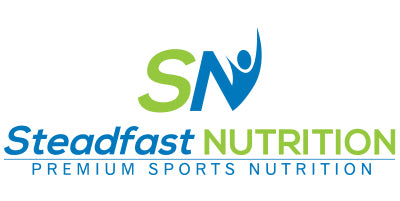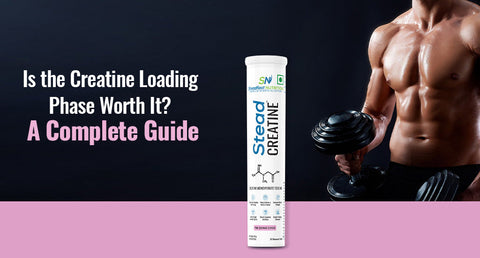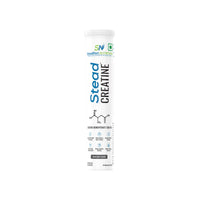Table of Content
The advent of various performance-enhancing supplements in the market has popularised creatine as an ergogenic aid - supplements that are used by many individuals to enhance their energy levels and expedite recovery for better performance. Creatine supplementation is used by professionals, weightlifters, powerlifters, and fitness enthusiasts to improve strength and endurance. Moreover, creatine is a naturally produced non-protein nitrogenous compound in the human body. Creatine is majorly produced in the brain and muscles to regenerate ATP (adenosine triphosphate) which is responsible for providing energy to the muscles.
Creatine is a naturally occurring compound made up of three amino acids: L-arginine, glycine, and L-methionine. It gets transported to the muscle cells in the body through the bloodstream, providing energy to fuel them for intense workouts. Creatine is also naturally present in fish, poultry, and red meat and can also be consumed through supplements. Whether or not to indulge in “the creatine loading phase” is a debatable topic in the fitness industry. While experts reveal that creatine can improve various parameters in exercise performance, there are no consistent studies to indicate improvement in performance because of creatine loading across sports and exercises.
What is the Creatine Loading Phase?
The period of consuming higher amounts of creatine within a short duration, before shifting to a lower dose of maintenance phase is called “The loading phase”. This phase usually involves the consumption of higher creatine doses to fuel the muscles rapidly for effective results. Creatine dosage varies from about 20g/day for about 5 to 7 days followed by a maintenance dose of a minimum of 2.5-3 g per day. The maintenance phase involves the consumption of creatine daily for effective results at comparatively lower dosages ranging between 3-5g/day. Many athletes and fitness enthusiasts consume higher doses of creatine either for instant results or due to time-sensitive tournaments and competitions.
Mentioned below are the benefits, side-effects and precautions that one must take while going on a creatine supplementation to avoid any potential risks.
Benefits of the Creatine Loading Phase
Benefits related to it require more research as there is no certainty that it will work the same across all sports. Still, it has shown positive effects on performance in endurance and strength exercises for some. Furthermore, when consumed in higher dosages it is important to consult a professional healthcare provider to avoid any health risk. For all individuals and athletes involved in different sports, creatine loading without exercise can lead to kidney and liver problems, as excess creatine consumed remains unused by the body leading to overloading. Creatine takes 2- 4 weeks to show noticeable effects after supplementation, but with higher doses in a loading phase you may notice the benefits within a week or few days.
Some potential benefits of the creatine loading phase are discussed below.
- Enhances exercise performance: It has benefitted athletes who perform high-intensity workouts such as powerlifting, sprinting, and long and high jumps and require a constant supply of fuel to push themselves.
- Helps Prevent Fatigue: It promotes quick ATP synthesis which induces sustained release of energy during prolonged activity sessions, preventing fatigue in exhaustive exercises and sports such as football and weightlifting.
- Reduces the risk of muscle injuries: Muscle cramps and pulls happen because of electrolyte imbalance and dehydration in the body, especially during endurance sports or intense training sessions. Although creatine can’t prevent them directly, it can reduce the risk of injuries by retaining water in the muscles and lowering incidences of dehydration, resulting in fewer chances of cramping, muscle strains and other no-contact injuries.
- Increased ATP availability: The body requires creatine to fill up creatine reserves. During the loading phase, it helps in the quick regeneration of ADP into ATP, which acts as the main energy source for the muscle contraction process and further helps the body to perform HIIT with a constant supply of ATP.
- Aids recovery after intense exercise: Creatine monohydrate is the best creatine for muscle gain and helps in quick ATP regeneration which results in enhancement of depleted energy levels and minimises inflammation and muscle damage. It also allows athletes to sustain greater training loads and for longer periods, resulting in improvements in overall performance and recovery.
Side Effects of the Loading Phase
- Bloating: Increased water retention during the creatine loading phase can cause digestive discomfort and bloating, temporarily increasing body weight due to water retention. Thus, it is advised to skip the loading phase if not absolutely necessary, to avoid bloating or any other related repercussions.
- Stomach ache: The creatine loading phase can trigger gastrointestinal issues such as Stomach discomfort, diarrhoea, and gas in many individuals as everyone’s bodies are different and may react differently to higher doses of creatine. Thus, it is advised to consume high-quality creatine in the recommended serving split into several doses during the loading phase.
- Kidney damage: Raised creatine levels in the blood due to the loading phase may overload and disrupt kidney functions and it may worsen the condition in people who already have certain kidney diseases. Hence, it is advised to consume creatine gradually in maintenance phase dosages rather than jumping directly to the loading phase.
- High blood pressure: Individuals with pre-existing conditions related to hypertension and blood pressure should always consult a healthcare professional before starting creatine supplementation to avoid any severe unwarranted risks.
Who Should Consider the Creatine Loading Phase?
Using creatine for muscle gain can be considered particularly for those athletes and fitness enthusiasts who are looking for increasing the muscle mass, boosting endurance, and maximising strength in a short period. The Creatine loading phase is also majorly suitable by sportspersons or athletes before competitions, especially during peak training periods, to perform well. However, even highly trained athletes are advised to consult a doctor before starting the creatine loading phase to avoid any repercussions and get optimal results.
Who Should Skip the Loading Phase?
Creatine should be consumed with caution and hence, it is important to consult a professional before incorporating a creatine supplement and planning to initiate the loading phase to avoid the potential health risks. People who are diagnosed with kidney or liver problems or diabetes are advised not to take creatine, as it might interact with certain medications or may affect the liver and kidney functioning. Furthermore, pregnant and lactating women are also advised not to take creatine supplementation. You may opt for the general maintenance phase with a lower dose if you want to see the desired result but have days for that.
Is the Creatine Loading Phase Worth It?
The question “Is creatine worth it?” is something most beginners ask and are sceptical about when starting their fitness journey. Though creatine monohydrate is a well-studied form of creatine which is proven safe and effective in improving athletic performance, there is limited data about the importance of creatine loading phase and its effect on the body’s energy inventory. While it may show results faster, there is no concrete evidence to support that it is necessary to see optimal results.
Supplementing with the recommended creatine dosage may have the same effect but over an extended period of time, as the body might take longer to utilise the creatine storage to reach optimal levels. You should only consider it, if you are in a time-sensitive situation, seeking rapid gains and results. But in general, there isn’t any particular protocol that dictates that it is better than the maintenance dosage.
Conclusion
There’s no one-size-fits-all approach concerning the creatine loading phase. Numerous measures come into play while determining its role in enhancing gains and muscular strength, such as exercise intensity, diet, gender, lean mass percentage, and medical history. Creatine timing is also one of the major factors that play a reasonable role in deciding its effectiveness. SteadCreatine by Steadfast Nutrition is your go-to supplement for fuelling muscles with energy and boosting performance. 30 minutes to an hour before the workout is considered the best creatine timing to achieve optimal results. SteadCreatine enhances muscle growth by retaining water in the muscles, which support short and high-intensity activity. In conclusion, more research is required to know the significance of the creatine loading phase and if it is a sustainable method to improve performance.


